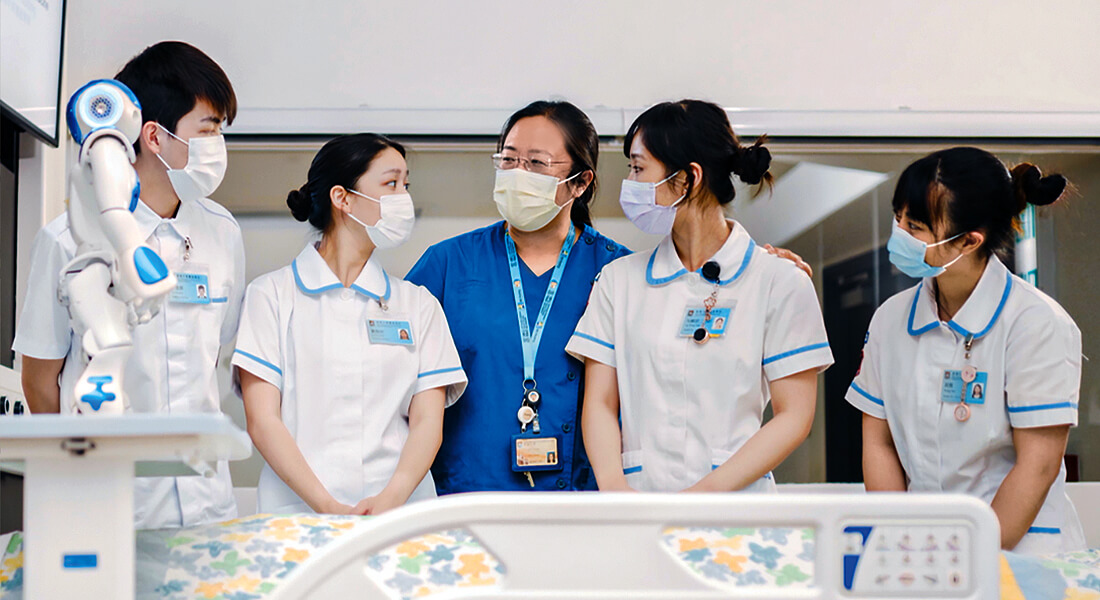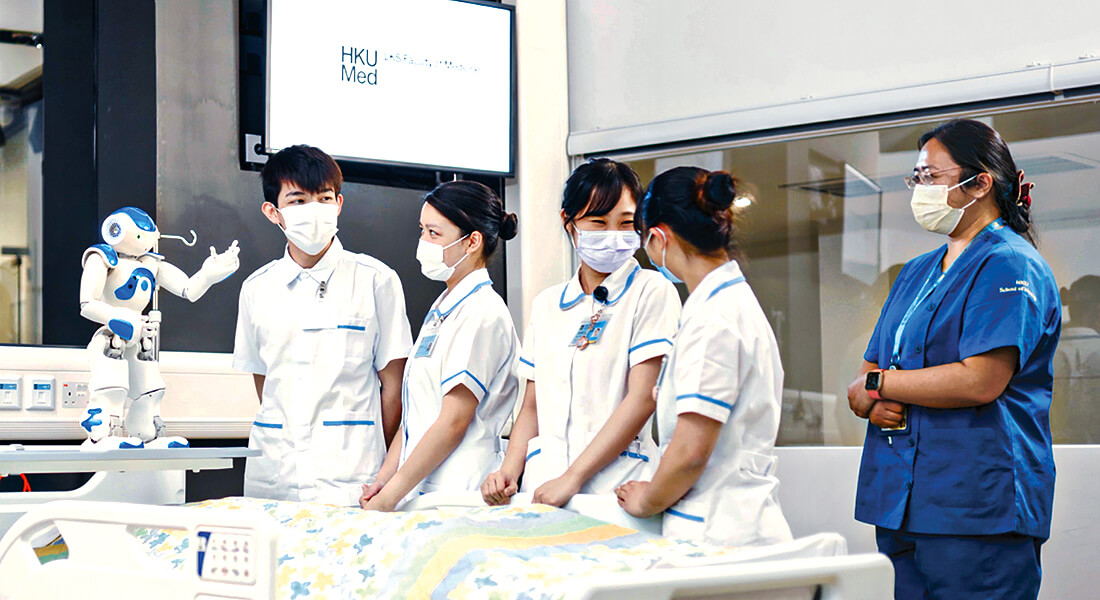
Teaching and Learning
Using Chatbot to Enhance Students’ Learning in Clinical Assessment Interviews
Dr Cecilia Sit Tin-yan | Senior Lecturer
Nursing is a vast topic, covering a huge range of information. Simply trying to memorise the essential information is a challenging task for any aspiring nurse. This has motivated me to search out new opportunities for students to consolidate what they learn because practice not only makes perfect, it helps to commit knowledge to memory.
My teaching motto is “making attractive classes” and it has driven my interest in pedagogy innovation. In recent years, I have used advanced learning technologies in class, such as audience engagement platforms, gaming, simulation and more recently, a chatbot and semi-humanoid robot.
The idea of using a chatbot and robot originated after I observed a nursing laboratory in which nursing students practiced focused interviews. They formed in groups of two, with one of them presenting as the patient and the other acting as the nurse who collected patient information. Unfortunately, this drama-based learning method was less engaging than expected because the students were dealing with classmates they already knew, they had scripts, and they knew the answers. As a result, their communication skills for dealing with real patients were not given a chance to effectively develop.
To address that shortfall, I set out to develop simulated patients using conversation-oriented chatbots and incorporate them in semi-humanoid robots, with support from the HKU School of Nursing and an HKU Teaching Development Grant. The robots are equipped with a camera and facial recognition functions that allow them to have eye contact with users. They are also able to generate appropriate gestures during interactions to simulate patients. With a built-in database, the robot-chatbot can give instantaneous feedback and thus enhance social learning, improve engagement and facilitate students’ self-directed learning.
We introduced the robot-chatbot in the clinical assessment interview and found that it supplemented existing learning modalities and enhanced students’ self-efficacy by prompting their clinical reasoning using a fun and engaging pedagogy. Results from a student focus group found both positive and negative feedback towards this learning model. On the one hand, students did indeed find the robot-chatbot to be a fun and innovative pedagogical tool. They reported having a sense of communicating with a ‘real’ patient in terms of the content provided by the chatbot and they found this to be meaningful. Nevertheless, there are limitations, students also commented on the technical issues encountered due to WIFI crashes, downtime, and incoherent responses from the chatbot when it was unable to recognise the voice input. Furthermore, they felt the tone of the robot was quite computer-like, posing a limitation because they were unable to understand the robot’s emotional intent.
Technology creates possibilities for providing meaningful learning in class, making the class learning fun, fostering engagement and motivation, and developing students’ abilities in scaffolding for knowledge reconstruction. The feedback on the robot-chatbot was all worthy of further exploration and consideration, as the School seeks to identify new ways to enhance our students’ learning.







